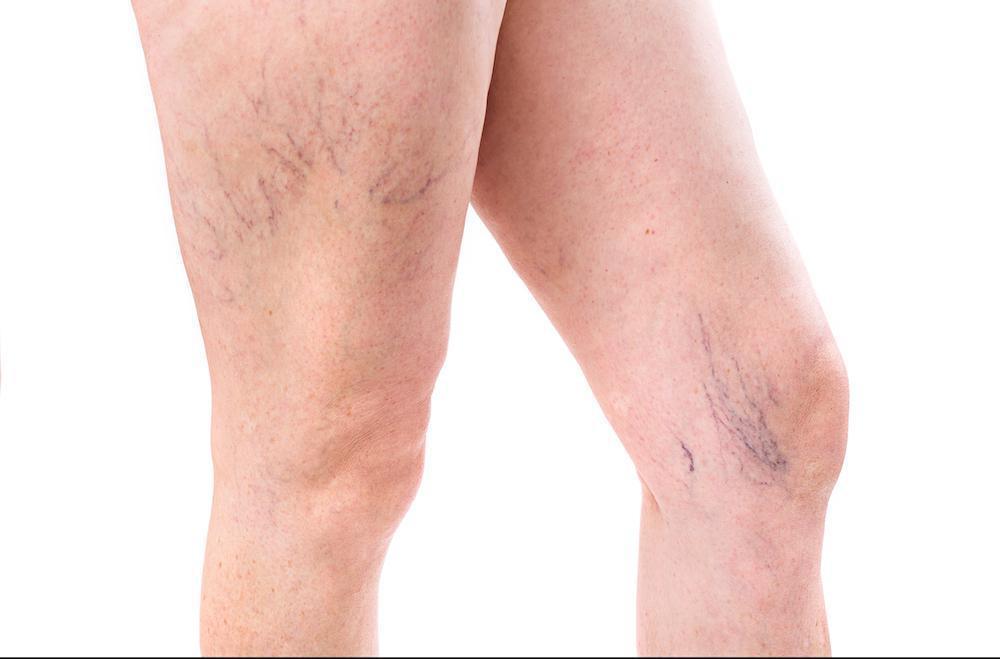
What Spider Veins Say About Your Health

If you’re frustrated by unsightly spider veins, you’re not alone. More than half of all people develop spider veins at some point in their lives, and if you’re one of them, you understand how self-conscious spider veins can make you feel.
It’s easy to understand why these tiny veins can make you worried about the appearance of your skin. But many of our patients at Manhattan Dermatology in New York City, wonder if spider veins are a significant health concern.
Our board-certified dermatologists understand and want to help answer your questions about spider veins, including whether they say anything about your overall health. At our offices in Murray Hill and Midtown East, we specialize in diagnosing and treating spider veins.
We’ve put together this informative post answering your questions about spider veins, what they say about your wellness, and the treatment options available to make them disappear.
Spider veins 101
Your vascular system includes capillaries, tiny blood vessels that connect your veins and arteries. When the one-way valves that regulate blood flow in your capillaries stop working, blood can pool in the vein and cause it to swell.
The result? Spider veins that look like small, squiggly red, blue, or purple lines on your skin.
Anyone can develop spider veins, but certain risk factors increase your likelihood of getting these unsightly veins. Here’s a look at some of the most common risk factors for developing spider veins:
- Being female
- Chronic constipation
- Family history or genetics
- A job that involves substantial standing
- Pregnancy and giving birth
- Being overweight or obese
- Sun damage
- History of leg blood clots or tumors
Injuries can also increase your risk of getting spider veins. If you break your leg, ankle, or foot and have significant swelling, chances are good you’ll get at least a few spider veins.
Spider veins and your health
Generally speaking, spider veins themselves aren’t harmful to your overall health. But unless they’re the result of a past trauma, like a broken ankle or foot, spider veins could be a symptom of an underlying vascular condition called chronic venous insufficiency (CVI).
CVI is common, with around 40% of American adults having the condition. In fact, every year, at least 150,000 additional cases of CVI are diagnosed. This vascular condition is due to faulty one-way valves in your leg veins.
Although spider veins are a sign of CVI, they don’t often cause symptoms. But CVI can lead to a host of additional uncomfortable symptoms, including:
- Swelling in your legs, ankles, and/or feet
- Achy legs or leg pain
- Skin changes, including itchiness, scaly or dry skin, skin that looks leathery, and skin discoloration
- Varicose veins
- Heavy, tired legs
- Leg cramps
- Restless leg syndrome
Talk to your provider if you have spider veins or other signs of CVI. Even if you don’t currently have other symptoms, you might develop additional CVI symptoms if you don’t seek treatment.
Treating spider veins
There are many different treatments for spider veins, but at Manhattan Dermatology, we use a combination approach to give you the best results. By using both sclerotherapy and laser therapy, we can clear your skin.
About sclerotherapy for spider veins
Sclerotherapy treatment involves the injection of a special solution into your spider veins. The solution contains a chemical irritant that causes the veins to collapse. When this happens, blood can’t enter the affected area and the spider veins die.
Your body flushes away the dead spider veins over time with other cellular waste. Within a few weeks of treatment, you’ll notice improvements in the appearance of your skin.
This treatment is generally pain-free, though you may experience very mild itching or burning sensations at the time of treatment. We review any special post-procedure instructions with you and take time to answer any questions you have.
About laser therapy for spider veins
At Manhattan Dermatology, we’ve selected the VBeam® laser system to tackle spider veins too small for sclerotherapy treatment. This powerful nonablative laser blasts even the tiniest spider vein by targeting oxyhemoglobin in the vessels.
You can rest easy knowing the targeted treatment ensures the surrounding tissues aren’t harmed. As with sclerotherapy, your body breaks down and removes the dead blood vessels using your natural cellular disposal system.
To learn more about spider veins or to schedule a spider vein consultation, call our office in Murray Hill or Midtown East, Manhattan, or set up an appointment using our online booking tool.
You Might Also Enjoy...


5 Tips to Make the Most Out of Botox® Treatments

Does Psoriasis Run in Families?

Do I Really Need Treatment for Basal Cell Carcinoma?

Are All New Moles in Adulthood Cancerous?


